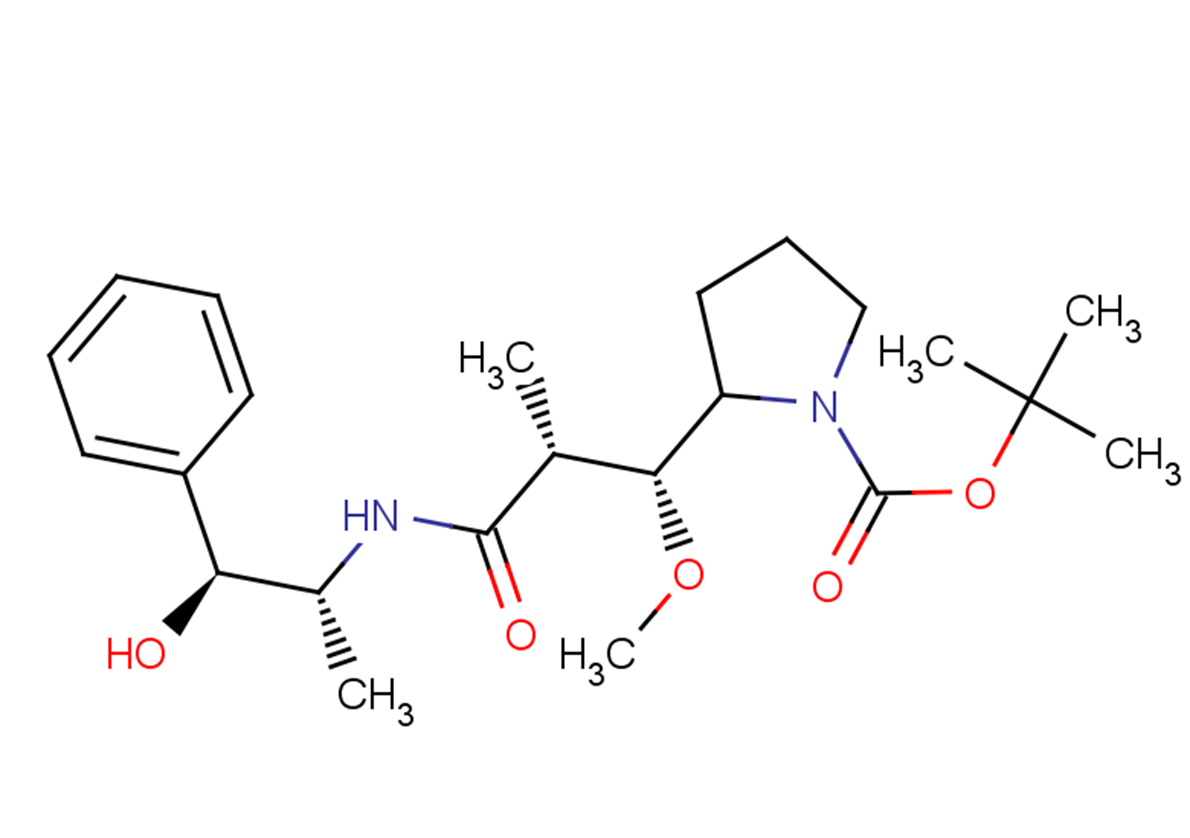
BOC-Dap-NE
CAS No. 160800-65-7
BOC-Dap-NE( —— )
Catalog No. M22950 CAS No. 160800-65-7
Boc-Dap-NE used in the synthesis of antibody-drug conjugates (ADCs).It is a cleavable ADC linker.
Purity : >98% (HPLC)
 COA
COA
 Datasheet
Datasheet
 HNMR
HNMR
 HPLC
HPLC
 MSDS
MSDS
 Handing Instructions
Handing Instructions
| Size | Price / USD | Stock | Quantity |
| 5MG | 31 | In Stock |


|
| 10MG | 43 | In Stock |


|
| 25MG | 70 | In Stock |


|
| 50MG | 102 | In Stock |


|
| 100MG | 147 | In Stock |


|
| 200MG | 219 | In Stock |


|
| 500MG | 357 | In Stock |


|
| 1G | Get Quote | In Stock |


|
Biological Information
-
Product NameBOC-Dap-NE
-
NoteResearch use only, not for human use.
-
Brief DescriptionBoc-Dap-NE used in the synthesis of antibody-drug conjugates (ADCs).It is a cleavable ADC linker.
-
DescriptionBoc-Dap-NE used in the synthesis of antibody-drug conjugates (ADCs).It is a cleavable ADC linker.
-
In Vitro——
-
In Vivo——
-
Synonyms——
-
PathwayOthers
-
TargetOther Targets
-
RecptorOthers
-
Research Area——
-
Indication——
Chemical Information
-
CAS Number160800-65-7
-
Formula Weight420.5
-
Molecular FormulaC23H36N2O5
-
Purity>98% (HPLC)
-
Solubility——
-
SMILESO=C(N1[C@@H](CCC1)[C@@H]([C@@H](C)C(N[C@H](C)[C@@H](O)C2=CC=CC=C2)=O)OC)OC(C)(C)C
-
Chemical Name——
Shipping & Storage Information
-
Storage(-20℃)
-
ShippingWith Ice Pack
-
Stability≥ 2 years
Reference
molnova catalog



related products
-
ms48107
MS48107 is a potent and selective positive allosteric modulator of G protein-coupled receptor 68 (GPR68). It is selective for GPR68 over the closely related proton GPCRs, neurotransmitter transporters, and hERG ion channels. It can readily cross the blood-brain barrier (BBB) in mice.
-
7,2,4-Trihydroxy-5-m...
7,2',4'-Trihydroxy-5-methoxy-3-arylcoumarin shows activity in inhibiting prostate specific antigen (PSA) secreted from androgen dependent prostate cancer cell line, LNCaP cells.
-
Orobanchyl acetate
Orobanchyl acetate, a natural strigolactone, is a germination stimulant for root parasitic plants.



 Cart
Cart
 sales@molnova.com
sales@molnova.com


